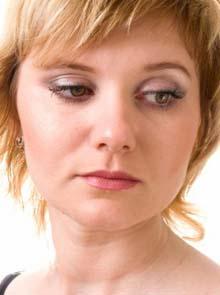 As a psychotherapist, this is my busiest time of year. Why? Because a lot of people are really bummed out and don’t understand why. They come to me feeling desperate in the hopes that I will help them get their “pep” back. Seasonal depression, otherwise known as Seasonal Affective Disorder (SAD) is a very common form of depression, which is only noticeable during those months where there is very little sunlight (like now!).
As a psychotherapist, this is my busiest time of year. Why? Because a lot of people are really bummed out and don’t understand why. They come to me feeling desperate in the hopes that I will help them get their “pep” back. Seasonal depression, otherwise known as Seasonal Affective Disorder (SAD) is a very common form of depression, which is only noticeable during those months where there is very little sunlight (like now!).
Why are we so susceptible to SAD? It’s because we tend to get a lot less sunshine than other parts of the world at this time of year and we experience dark, grey days for months at a time.
Symptoms of SAD
The symptoms of SAD commonly occur every year between September and November and continue until March or April. Symptoms often include a number of the following (*adapted from The Seasonal Affective Disorder Association’s website: www.sada.org.uk):
Sleep problems: Oversleeping and difficulty staying awake but, in some cases, disturbed sleep and early morning wakening
Lethargy: Feeling of fatigue and inability to carry out normal routine
Overeating: Craving for carbohydrates and sweet foods, usually resulting in weight gain
Depression: Feelings of misery, guilt and loss of self-esteem, sometimes hopelessness and despair, sometimes apathy
Social problems: Irritability and avoidance of social contact
Anxiety: Tension and inability to tolerate stress
Loss of libido: Decreased interest in sex and physical contact
Mood changes: In some sufferers, extremes of mood and short periods of hypomania (overactivity) in spring and autumn.
If you identify readily with all or most of the above symptoms and you’ve experienced them every winter for at least three consecutive years, chances are you are suffering from SAD. Luckily, there can be great relief found from a variety of non-invasive modalities available.
ESTHER’S TOP THREE THINGS TO MINIMIZE SYMPTOMS OF S.A.D.:
Light therapy
Recent research has shown that 85% of people diagnosed with SAD have been helped by light therapy. This involves being exposed to very bright light (at least ten times the intensity of household lighting) first thing in the morning for 15-30 minutes every day.
Look into getting a special light used to treat SAD. The one I use and recommend constantly to my clients is called the “Litebook Elite” It’s
small, lightweight (8 oz), and durable. You can order one by calling 1.877.723.5483. If you use my professional # (BC 0007) when you place your order, you’ll save twenty percent on the cost. I have registered myself with this company in order to make these lights more affordable to people.
The great thing about light therapy is that it is safe, has no side effects, and easy to use.
Regular Exercise
A 2001 study by the Duke University, in North Carolina, found exercise a more effective treatment for depression than anti-depressants, with fewer relapses and a higher recovery rate.
Researchers say a chemical in the brain called serotonin may be the key. People suffering from depression have low levels of serotonin, and exercise can boost those levels.
Find an exercise routine you enjoy and can commit to at least three times a week. Make sure it’s active enough to get your heart rate up and your blood pumping — this boosts serotonin levels and leaves you feeling more upbeat and positive.
Talk Therapy
Engaging in regular sessions with a psychotherapist who specializes in Cognitive Behavior Therapy to treat various forms of depression will give you the tools you need to re-train your brain from negative to positive thinking. When combined with other modalities of healing, this can provide much relief from SAD.
Practice lots of positive self-talk — much of depression is a result of what we say to ourselves — we need to learn to ‘think happy’: when we do this, the brain follows suit.
If you’d rather learn this own your own, I suggest you pick up a copy of David Burn’s classic self-help guide to overcoming depression, “The Feeling Good Handbook.” This is a wonderful resource and can be helpful to anyone who needs to change his or her thinking from negative to positive.
Esther Kane, MSW, Registered Clinical Counselor, is in full-time private practice as a psychotherapist in Courtenay, B.C. Esther has more than a decade of experience counseling women and their loved ones with a multitude of presenting problems. Her main focus is helping women to become free of barriers which keep them stuck so that they can become all that they dream of being.
She is the author of the book and audio program, “It’s Not About the Food: A Woman’s Guide To Making Peace with Food and Our Bodies” (www.endyoureatingdisorder.com) and “Dump That Chump” (www.dumpthatchump.com), and “What Your Mama Can’t or Won’t Teach You” (www.guidebooktowomanhood.com). To learn more about Esther’s services, please visit her website, http://www.estherkane.com
